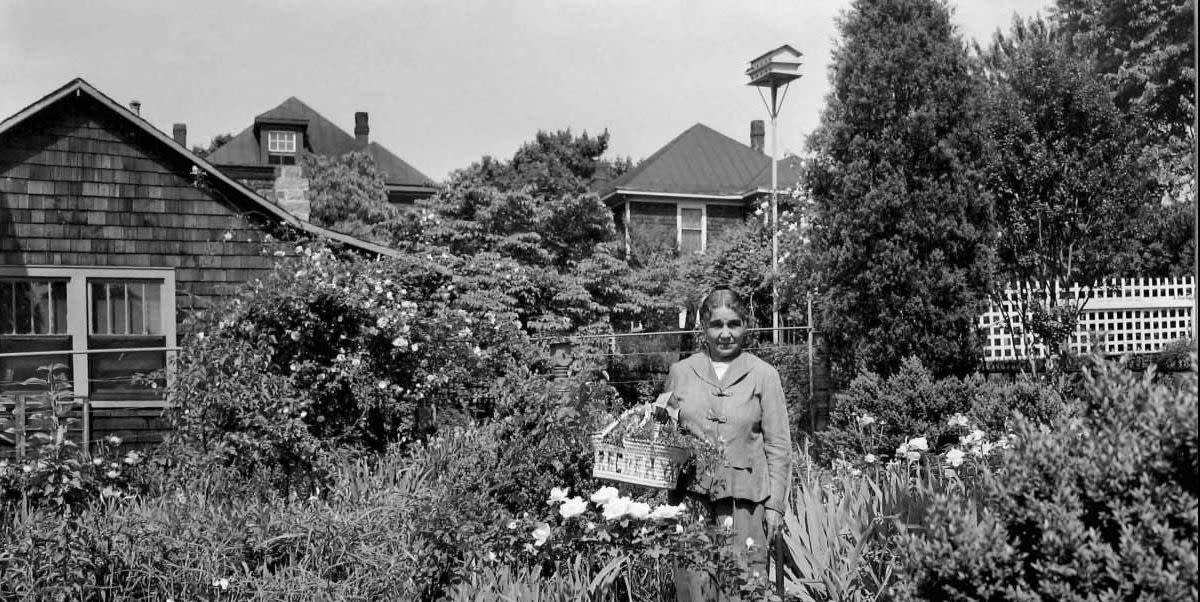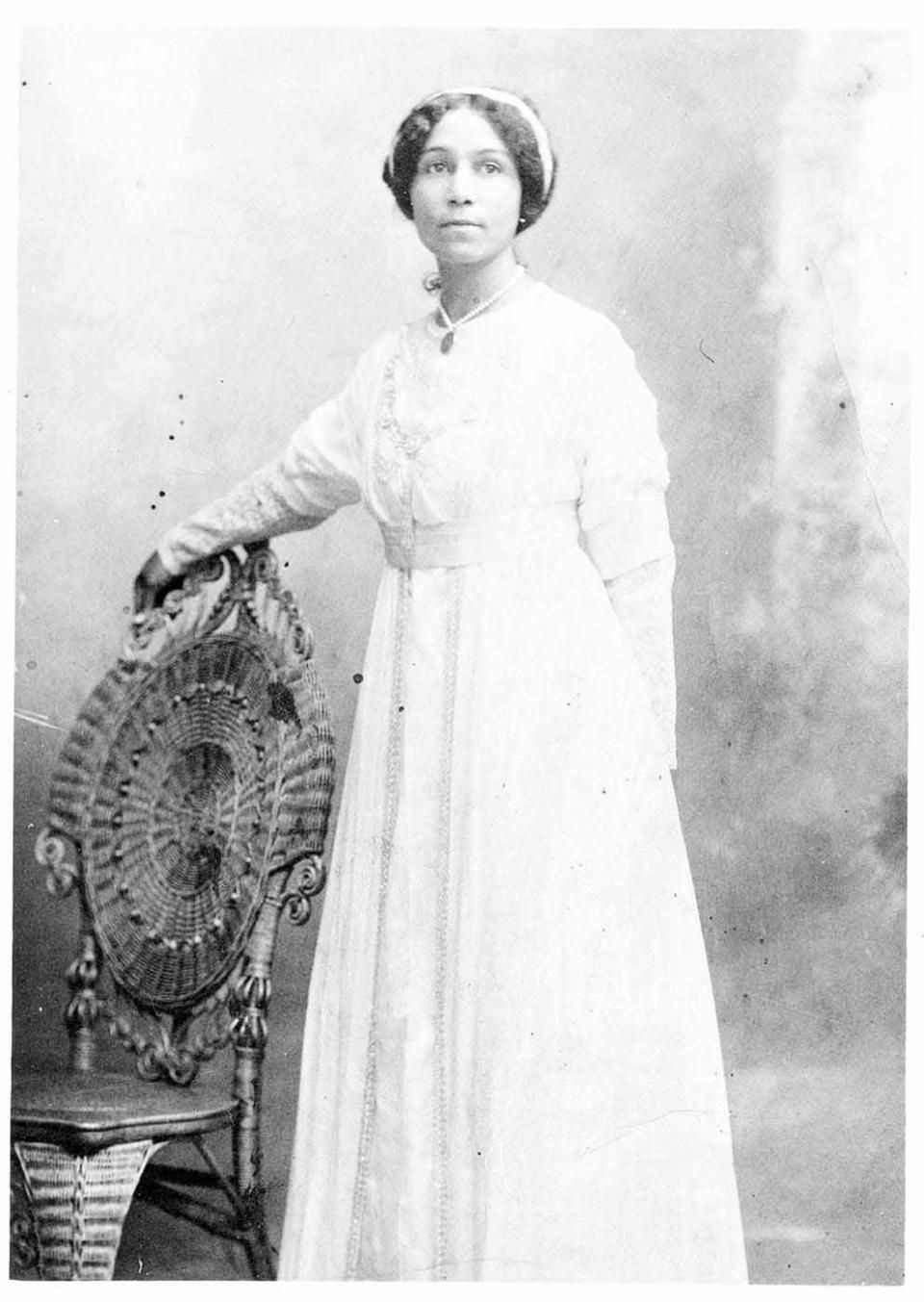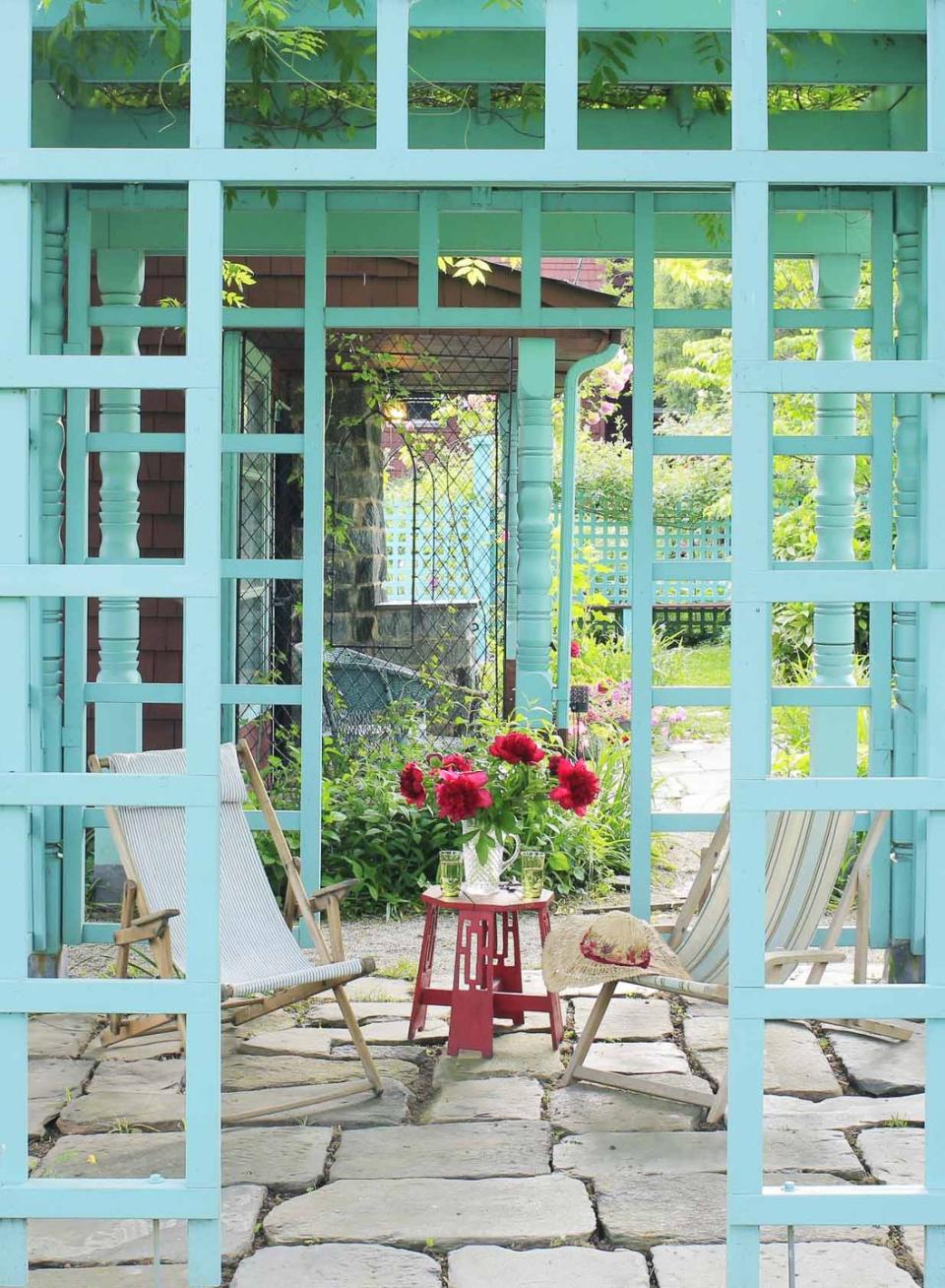Who is Anne Spencer? Why You Need to Know This Harlem Renaissance Poet—and Visit Her Garden

- Oops!Something went wrong.Please try again later.
She was a great American poet of the Harlem Renaissance, a civil rights activist, and a passionate gardener. She was also a librarian, a teacher, a wife, and a mother. But the three central tenets of Anne Spencer’s life—art, human dignity, and the natural world—combined with a force that is singular in American life.
It makes her poetry ring with the inexorable power of nature as she addresses racial inequities; it makes her life story an exemplar for the power of Black women in the most hostile settings; and it makes her beloved garden—part of the Anne Spencer House & Garden Museum in Lynchburg, Virginia—a testimony to the power of the garden as a place of inspiration and sanctuary.
Shaun Spencer-Hester, one of Anne’s 10 grandchildren, fondly remembers playing in her grandmother’s garden and now relishes helping to preserve her remarkable legacy at the museum, which she lives nearby. As Spencer-Hester recounts, her grandmother's life was lived against the relentless friction of racism and sexism.

Born on February 6, 1882, in rural Virginia to parents both directly touched by enslavement (her father was born into slavery in 1862 and her mother was the child of a formerly enslaved woman and a wealthy Virginia landowner), Spencer didn’t attend formal school until she was 11. But she excelled instantly and catapulted to graduating from the Virginia Theological Seminary and College (now the Virginia University of Lynchburg) six years later as its valedictorian.
After meeting and falling in love with the charming and entrepreneurial Charles Edward Spencer at Virginia Theological Seminary, the two married in 1901 and moved into a house he built in Lynchburg, Virginia. Meanwhile, Spencer began writing poetry while confronting the overt racial hostility of the Jim Crow South. “My grandmother wasn’t allowed to vote, wasn’t allowed to sit anywhere she liked on the bus,” Spencer-Hester says. “She defied that.”
In fact, Spencer refused to give up her seat on a segregated trolley one day and was pulled out and taken into custody. “My grandfather was called to come get her,” Spencer-Hester recounts. “But Edward knew who he'd married. It was no surprise,” she adds. “She told Edward and both his two sisters to no longer take the trolley.” Spencer started, in effect, her own boycott long before someone had the idea in Montgomery, Alabama.
Meanwhile, Spencer’s finely tuned, acutely observed poetry (sometimes written on scraps of paper or garden catalogs) was discovered by its first champion, the Black author and activist James Weldon Johnson, who visited Spencer in 1919 to discuss her efforts to open a chapter of the NAACP in Lynchburg (which she did) and read some of her work. With Johnson’s support (along with his editor, H.L. Mencken), Spencer’s first poem, “Before the Feast at Shushan,” (which literally opens with the words “Garden of Shushan!”) was published in the February 1920 issue of the Crisis, published by the NAACP and credited as the world’s oldest Black-owned magazine.
Her career as a poet was launched, and Spencer published some 30 poems in the 1920s, linking her to the flourishing of Black thought, writing, and art that characterized the Harlem Renaissance of the decade. Resistant to editors and publishers who censored statements with racial or sexual equality (such as her 1923 poem “White Things” and 1929 poem “Grapes: Still-Life”), Spencer withdrew from publishing after the 1920s and never published a collection of her poetry. But her work was extensively anthologized, and she was the second Black poet (and the first female Black poet) featured in the Norton Anthology of Modern Poetry. (She is one of four Black writers honored in a 2020 edition of postage stamps commemorating “Voices of the Harlem Renaissance.”)
And so, the irony isn’t lost on Shaun Hester-Spencer that her grandmother, who sought employment in Lynchburg as a librarian in 1923, produced her own published poetry as evidence of her qualification. “She takes the book in as her resume to this board of white men and says, ‘I deserve to be the librarian here.’ My grandmother thought, ‘If I get this job, I can get in, and then give access to people in my community through books, knowledge, and education.' ” Anne Spencer served as a librarian at Lynchburg’s all-Black Dunbar High School for 20 years.

Although Spencer never moved from Lynchburg, her home—and garden—became a salon for Black intellectuals and artists from around the country, including W.E.B. Du Bois; Marian Anderson; George Washington Carver; Thurgood Marshall; Martin Luther King, Jr.; and Paul Robeson, to visit when traveling in the South. Having started with a backdoor vegetable garden, Anne and Edward Spencer created an increasingly verdant retreat for themselves and their visitors (and even a social and loquacious crow they fostered). Edward built a colorful, tiny cottage for Anne in the midst of the 45-by-125-foot rectangular garden—dubbed Edankraal in honor of both their first names and the Africaans word for enclosure (kraal)—where the poet worked and retreated, as Spencer-Hester says, from the ongoing pressures of racial inequity surrounding her.
“This garden as created by her and Edward, these structures, the cottage where she created this poetry, is all inside this garden,” Spencer-Hester says. “It was a safe place for her to plant flowers and lay out a beautiful garden, but it was more a safe place for she and others who came there to be. Right in the center of the city.”

While the house and garden remained in family hands (Spencer died at age 93 in 1975), Lynchburg’s Hillside Garden Club was instrumental in its early renovation starting in 1983 and return to its colorful, fragrant splendor. The property first opened to the public in 1985, and now Spencer-Hester (herself a designer) continues to refine the curation of her grandmother’s personal belongings and archival materials to bring her astonishing presence back to life for visitors to the Queen Anne shingle-style house and its exquisitely ebullient garden spaces.
For Spencer-Hester, her grandmother’s passion for all things growing speaks to her across the years. “Even to this day,” she says, “I go there to certainly rake leaves and things like that, but I go there because it’s such a peaceful place. I think about my grandmother doing this same thing. A peaceful place where she could think about cultivating plants and also think about the challenges that she as a woman, and she as a Black woman, was facing and to maybe work that out in her head, like writing a poem.”
Join VERANDA for a tour of Virginia's historic homes and gardens, including Anne Spencer's home and garden in Lynchburg, in May 2021. Find more information here.
You Might Also Like

